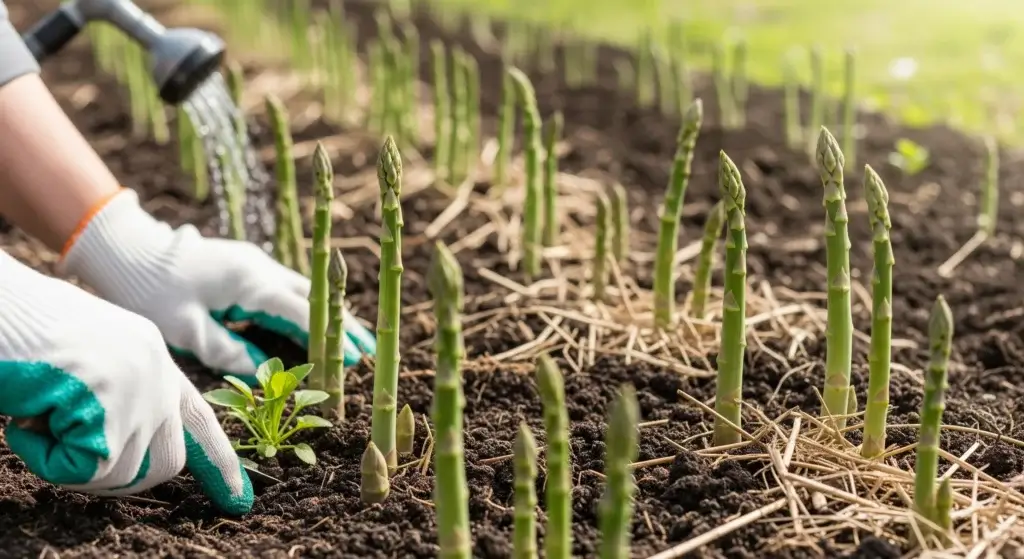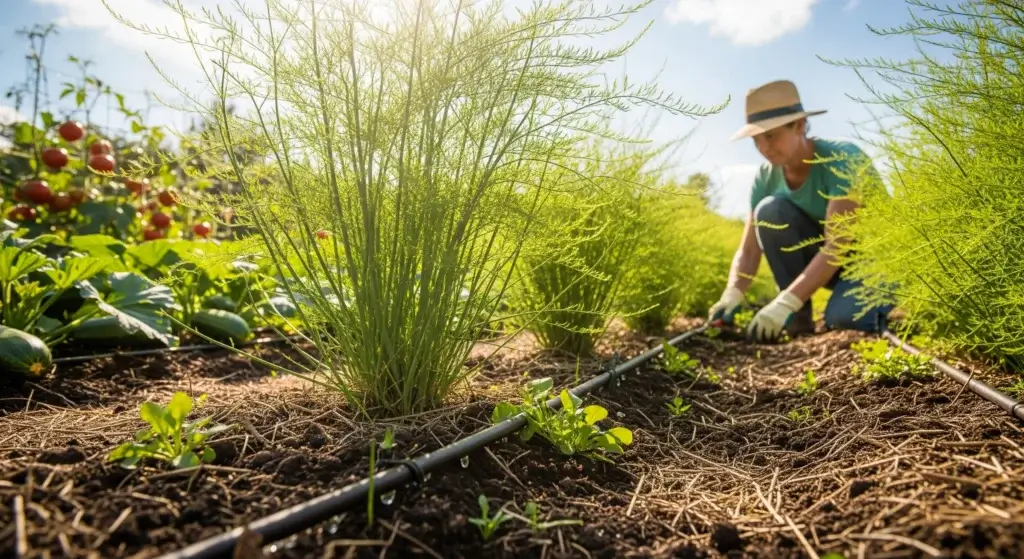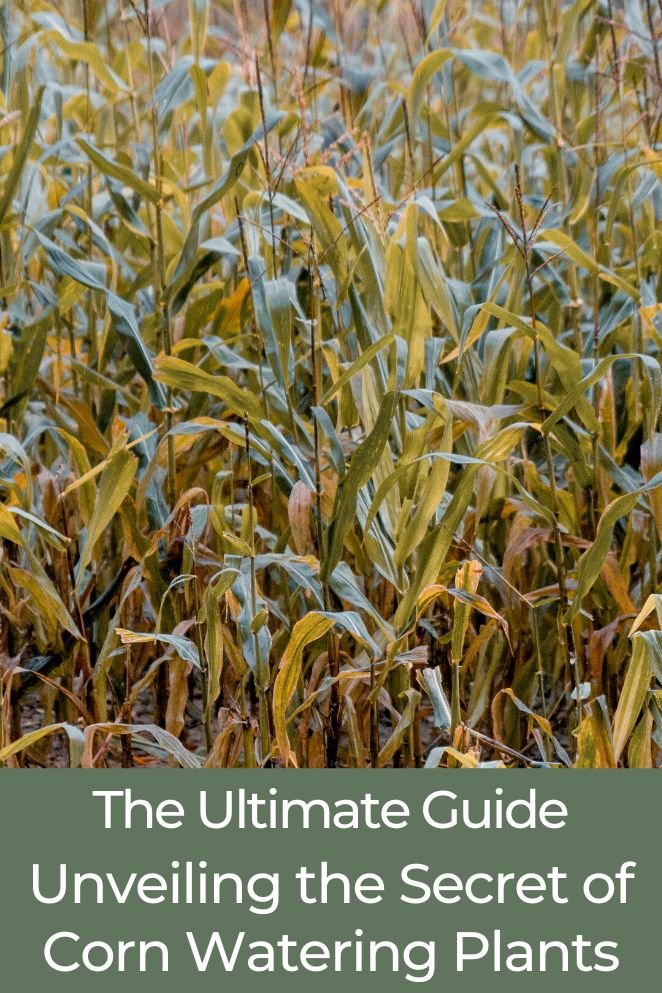
For those of us who adore the company of greenery, the corn plant, scientifically termed Dracaena fragrans, holds a special allure.
Today, I’m excited to delve into the art of watering these lovely plants. Ensuring the right watering technique isn’t just a routine task; it’s a fundamental aspect that significantly influences their well-being and development.
Mastering the art of watering is akin to nurturing a thriving relationship with these green companions.
It’s a learning process that involves observing, adapting, and fine-tuning care practices to ensure their flourishing growth and vibrant presence in your space.
Importance of Proper Watering for the Plant’s Health and Growth
Water is more than just a necessity; it’s the cornerstone of a healthy, thriving life for our leafy friends, especially for the beloved corn plants.
Let’s break down why getting the watering routine right is a game-changer:
- Read also: The Ultimate Aloe Plant Watering Care Guide
- Read also: Mint Plant Watering
Essential nutrient transport
Water serves as the carrier for essential nutrients dissolved in the soil.
It’s like the delivery truck that transports nutrients to the corn plant’s roots, ensuring they receive the vital sustenance required for growth.
Photosynthesis support
Just like us needing food for energy, plants require water for photosynthesis.
It’s the process where they convert light into energy. Water is a crucial ingredient in this process, enabling the plant to produce its food and thrive.
Cellular functions
Within the plant, water plays a pivotal role in various cellular functions.
It helps in maintaining cell structure, enabling the plant to maintain its shape and form.
It’s almost like the building blocks that hold the plant together.
Temperature regulation
Water is a fantastic temperature regulator for plants.
It helps maintain a stable internal temperature, preventing extreme fluctuations that could stress or harm the plant.
Moisture balance
Achieving the right balance of moisture in the soil is crucial.
Proper watering prevents the soil from becoming too dry or too waterlogged.
This balance ensures the roots receive enough oxygen while retaining the necessary moisture for plant growth.
Resilience against stress
Adequate hydration boosts the corn plant’s resilience against environmental stressors like heat or drought.
A well-watered plant is better equipped to withstand challenging conditions.

Environmental Preferences for Growth
Corn plants thrive in specific environmental conditions that cater to their comfort and growth. Let’s dive into the details:
Light preferences
These plants revel in moderate to bright indirect light.
Placing them near a window where they can bask in filtered sunlight is ideal.
It’s akin to finding that sweet spot where the light is ample but not direct, preventing any leaf scorching while ensuring they receive the necessary energy for photosynthesis.
Temperature tolerance
Corn plants prefer a cozy room temperature ranging from around 65°F to 80°F (18°C to 27°C).
Avoiding sudden temperature fluctuations or extremes is beneficial for their well-being.
Think of it as providing them with a comfortable, stable climate, much like what we humans prefer.
Consistent watering routine
Corn plants appreciate consistency when it comes to watering.
Establishing a regular watering schedule aids in maintaining their hydration levels without causing stress due to fluctuations.
However, moderation is key – they dislike having “wet feet,” meaning they don’t thrive in excessively soggy soil.
Humidity consideration
While not overly demanding, corn plants do appreciate a slightly higher humidity level.
Placing a humidifier nearby or occasionally misting their leaves can mimic their natural tropical habitat, promoting better growth.
Pruning and maintenance
Regularly removing any yellowing or dead leaves keeps the plant healthy.
Pruning also encourages new growth, helping maintain its attractive appearance.
Watering Guidelines for Corn Plants
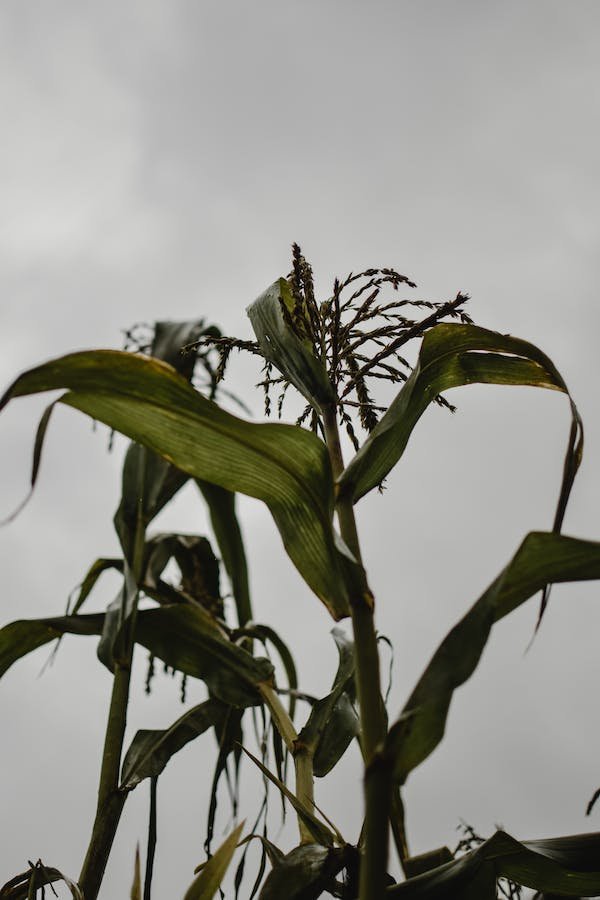
Here’s a detailed guide on watering corn plants, ensuring they receive the hydration they need without overwhelming their root system:
Frequency
Aim for a watering schedule roughly every 1-2 weeks. However, adapt this routine slightly based on your home’s specific humidity and temperature levels. Observing these environmental factors helps fine-tune the watering frequency to suit the plant’s needs.
Avoid waterlogging
It’s crucial to allow the soil to dry out slightly between watering sessions.
This drying period prevents waterlogging, ensuring that the roots receive sufficient oxygen and preventing their suffocation or rot due to excessive moisture.
Checking soil moisture
One reliable way to gauge if it’s time for watering is by checking the soil’s moisture level.
Inserting a finger about an inch deep into the soil can give you a good indication.
If it feels dry at this depth, it might be time to water; if it’s still moist, hold off a bit longer.
Drainage matters
Ensure proper drainage in the pot.
This allows excess water to escape, preventing waterlogging and providing an environment conducive to healthy root growth.
Indicators of Watering Needs for Corn Plants
Here’s a comprehensive breakdown of indicators to help determine when your corn plant needs watering:
Leaf posture
Keep an eye on your plant’s leaves.
If they appear droopy or sagging, it might be an indication that your corn plant is thirsty and in need of hydration.
This drooping is the plant’s way of signaling its need for water, akin to a visual cue for its thirst.
Leaf discoloration
Yellowing or browning of the leaves can also serve as telltale signs.
Yellowing may suggest that the plant has been overwatered or sitting in overly moist soil, whereas browning might indicate more severe water-related issues, such as root rot.
These changes in leaf coloration act as signals, urging adjustments in the watering routine.
Drooping leaves
When you notice your corn plant’s leaves drooping, it’s like a plant’s way of sending a distress signal.
Now, there are a few reasons why this might happen, could be a sign of underwatering, overwatering, or root rot.
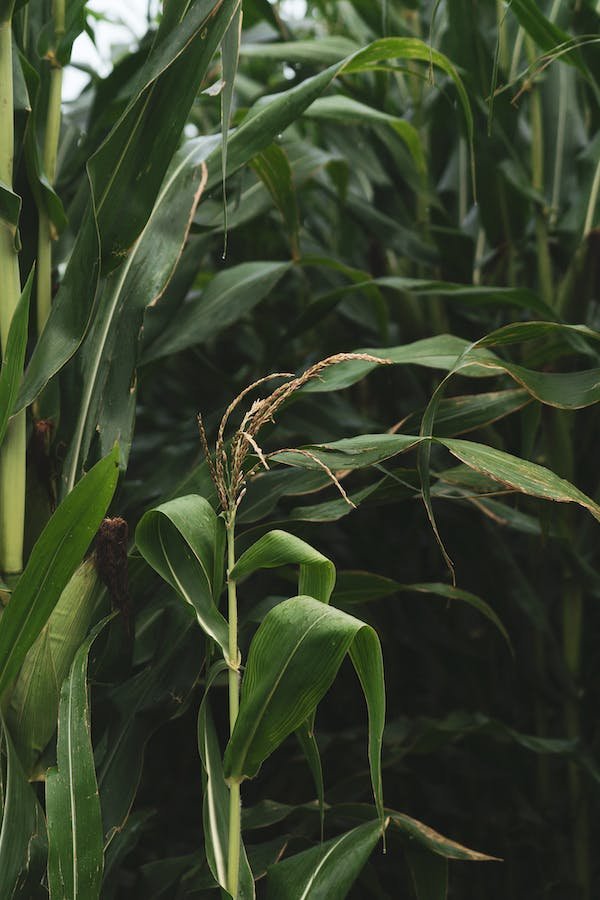
Tips for Watering a Corn Plant
Here are some top-notch tips for becoming a watering wizard for your corn plant:
- Optimal water temperature: Use room temperature water when watering your corn plant. This helps prevent shocking the plant’s roots. Cold water straight from the tap might cause stress to the roots, while excessively warm water can also negatively impact the plant.
- Drainage-friendly pots: Consider using pots with drainage holes for your corn plant. These holes allow excess water to escape, preventing waterlogging and ensuring that the roots have ample access to oxygen.
- Winter watering routine: During the winter months, adjust your watering schedule for the corn plant. As the plant’s growth slows down in this period, it requires less water compared to its active growing seasons.
- Avoid getting water on the leaves: Steer clear of wetting the leaves while watering your corn plant, as this moisture can create a conducive environment for fungal infections to thrive. Fungal infections might cause discoloration, spots, or other damage to the leaves, impacting the plant’s overall health.
Conclusion
Achieving a vibrant and robust corn plant is as simple as mastering your watering technique!
Understanding their specific requirements and delivering the precise amount of water at the perfect moments swiftly transforms you into a skilled plant caregiver.
Always bear in mind, that it goes beyond mere watering; it’s about tenderly nurturing a living entity.
- Read also: Inorganic vs Organic Fertilizers
- Read also: A Deep Dive into Organic Fertilizers
FAQs
Absolutely! Just let it sit out for a day to dechlorinate and reach room temperature before giving it to your plant.
Once a month during the growing season (spring and summer) a diluted, balanced liquid fertilizer should do the trick.
It might be a sign of overwatering. Cut back on watering and ensure proper drainage in the pot.

